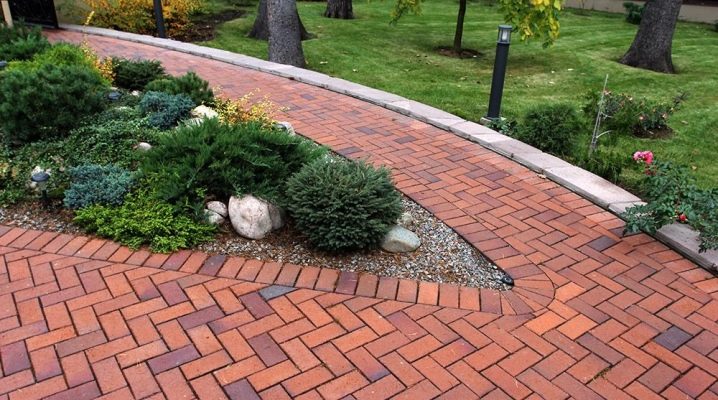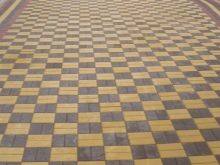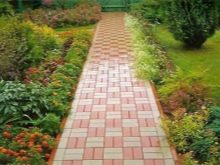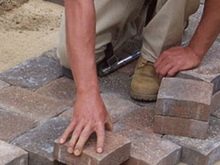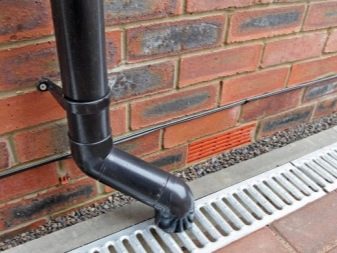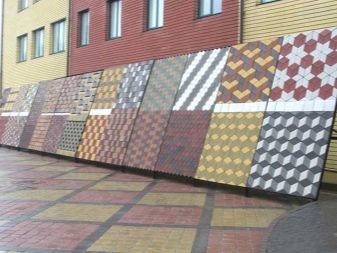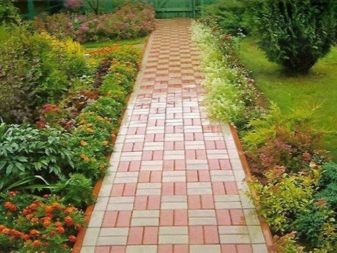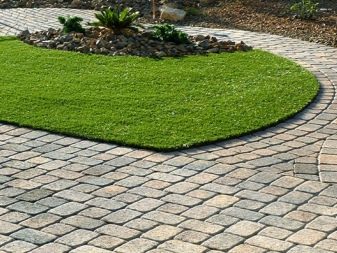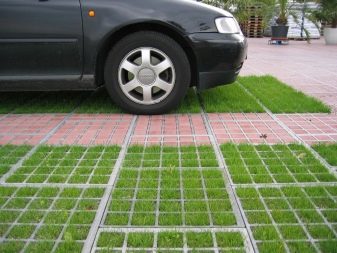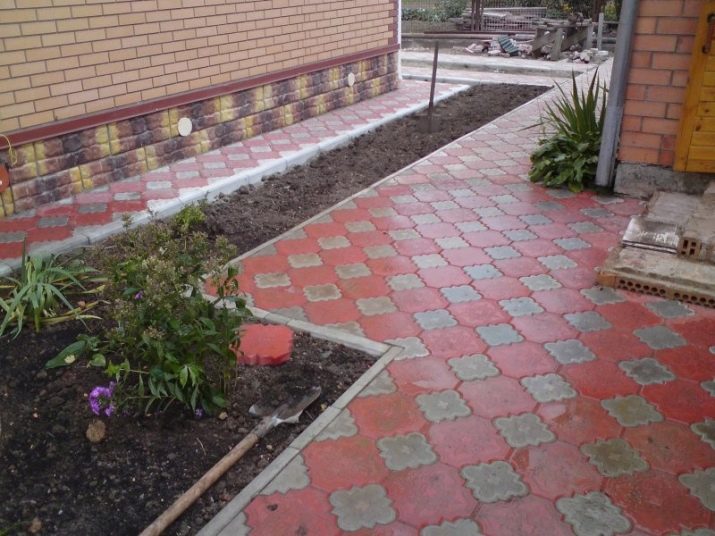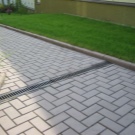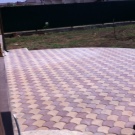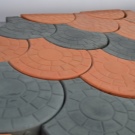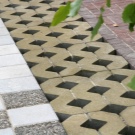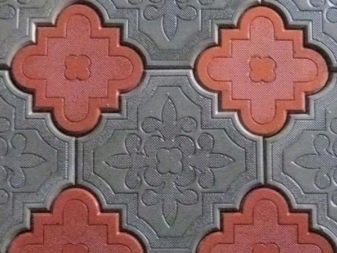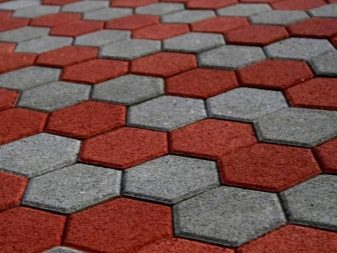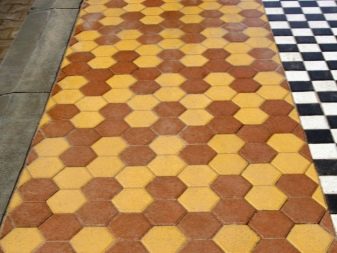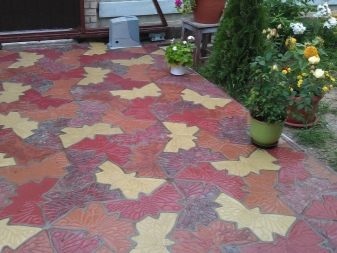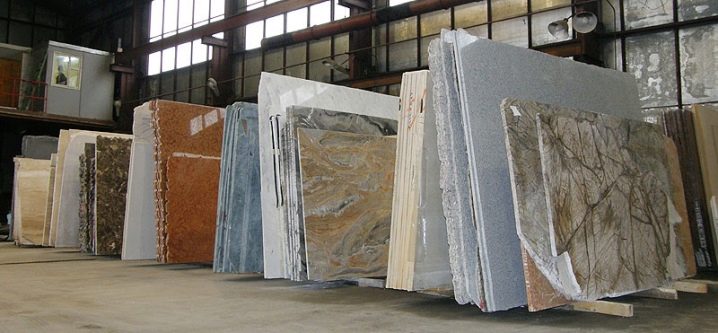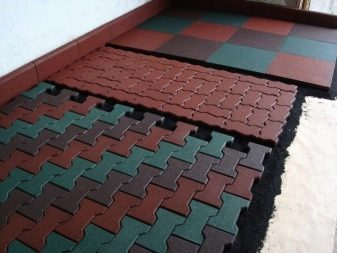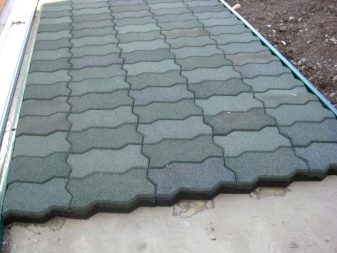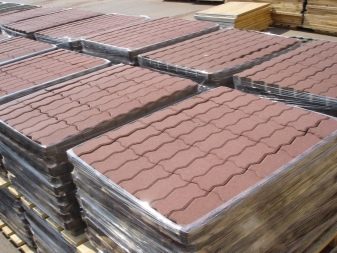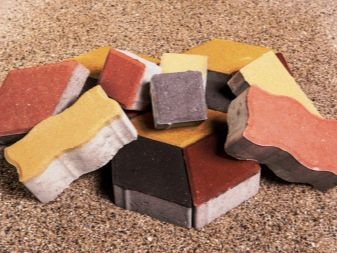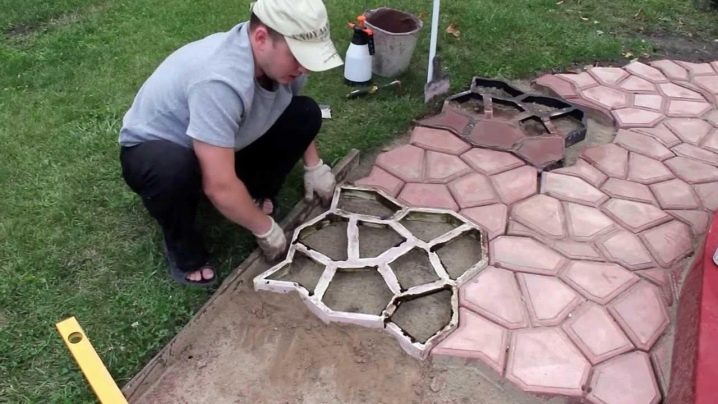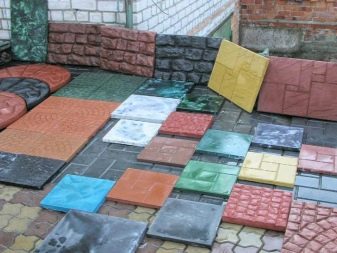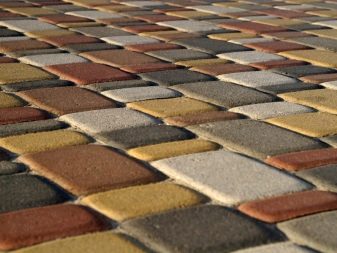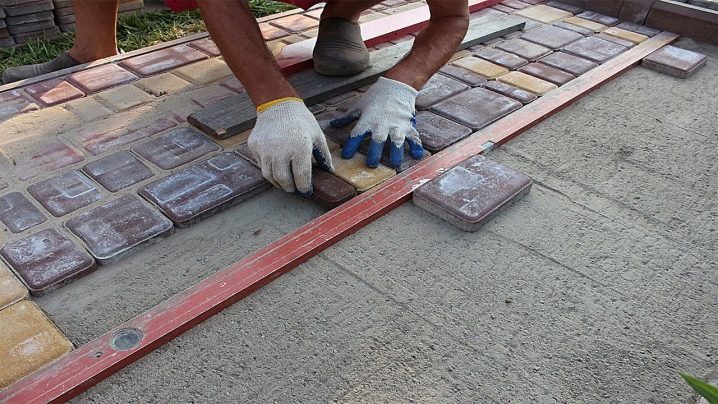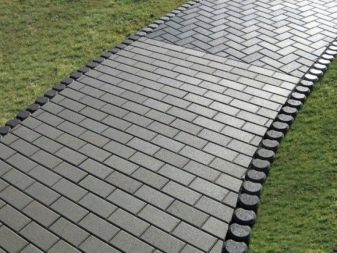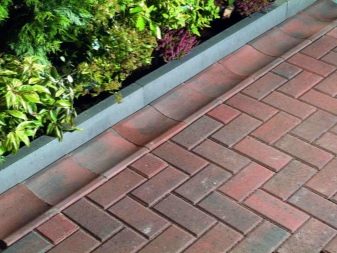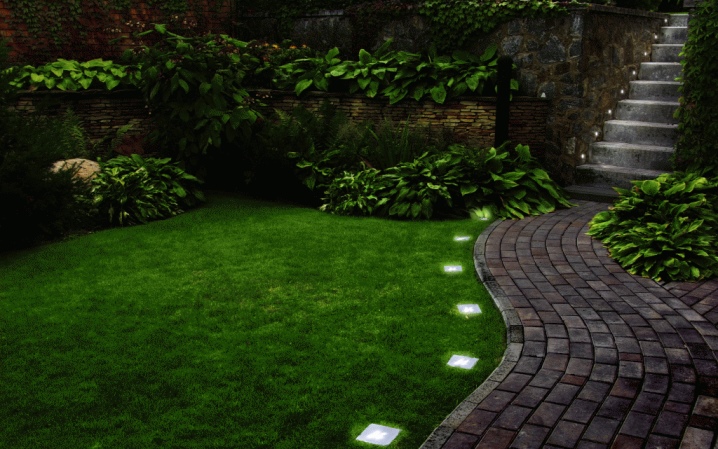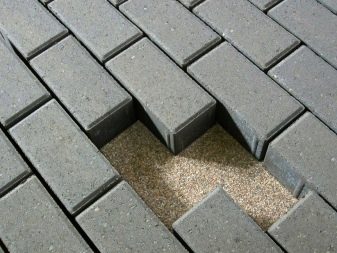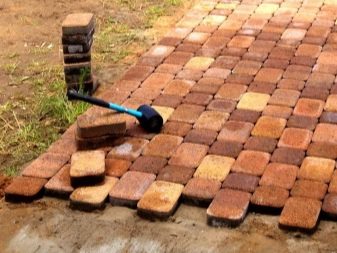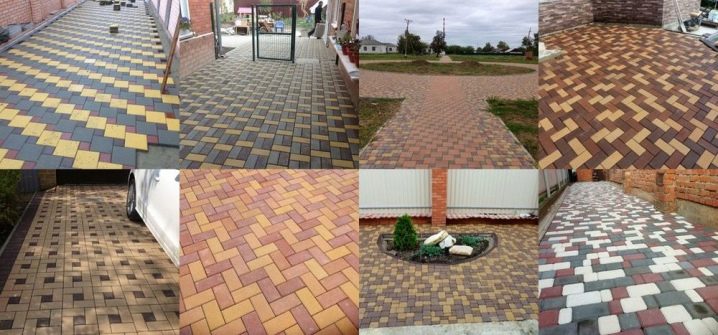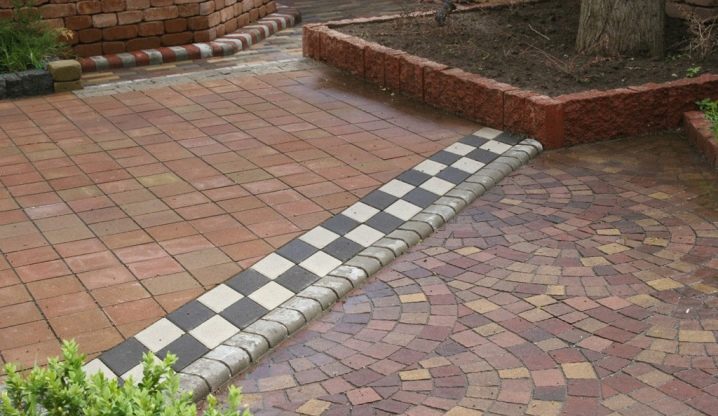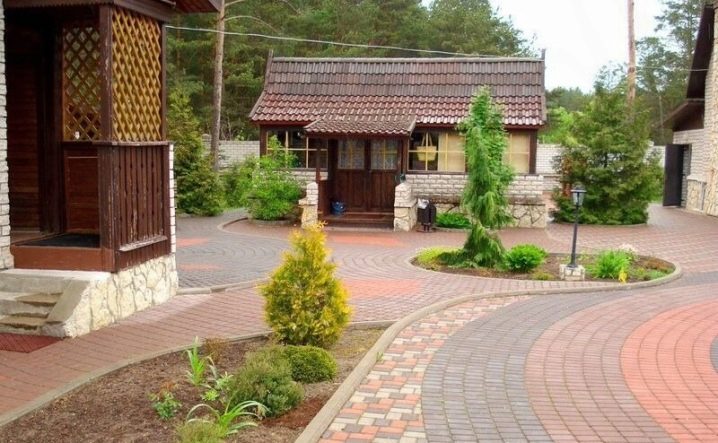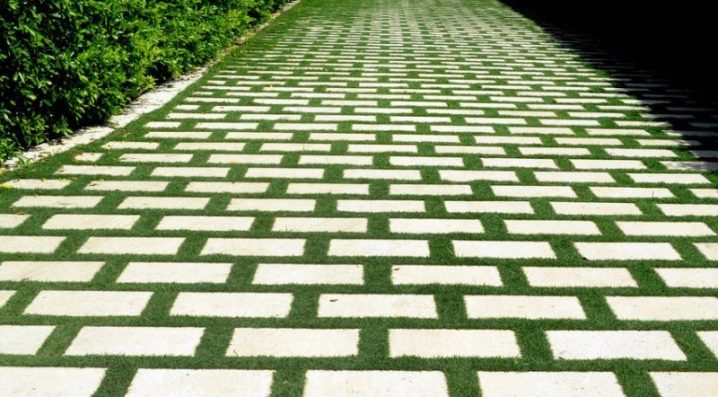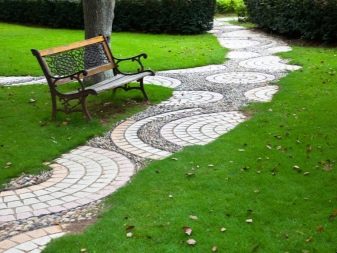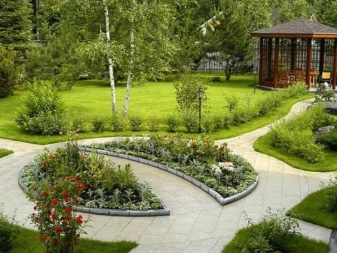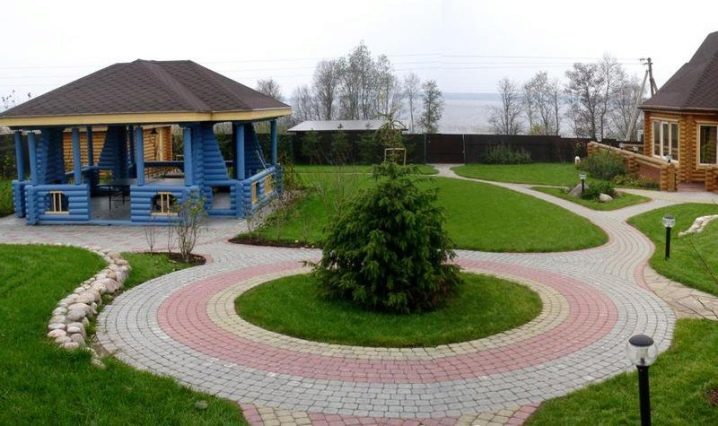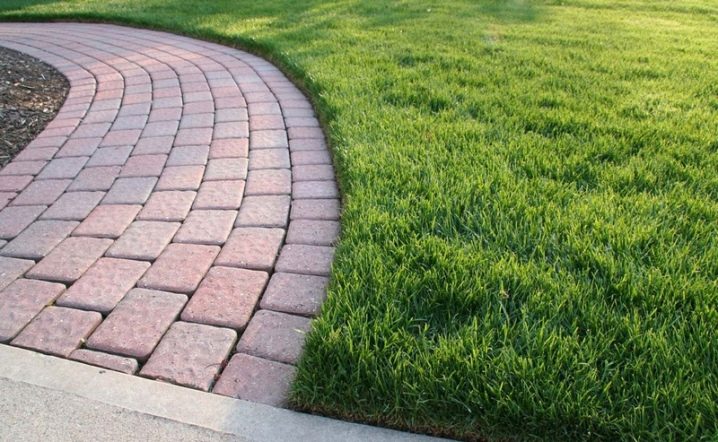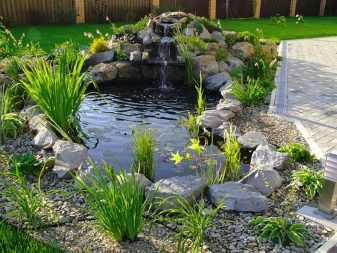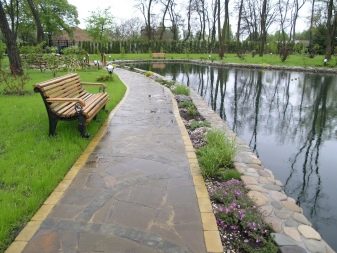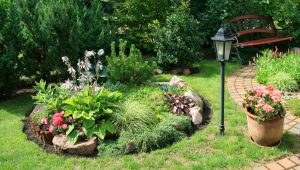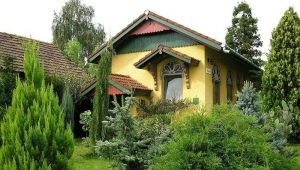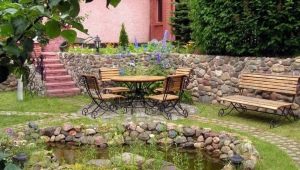Paving slabs for tracks in the country: varieties and design
Tile is an important functional element of landscape design and has a powerful decorating effect. With its help, you can create a durable coating and embody bold design ideas.
Special features
The paving slabs enjoy wide popularity among landscape designers, and also owners of country houses and seasonal dachas. Steady demand for this material is due to the following advantages:
- a large assortment with a huge variety of shapes, colors and design, it allows you to implement any solutions, in terms of complexity and artistic design, to finish the section of any stylistic direction. Combining tiles with different shades provides ample opportunities to create original compositions;
- easy installation Laying paving tiles does not require specialized equipment and professional skills.This allows you to independently engage in the formation of tracks and their repair if necessary;
Unlike asphalt pavement or concrete casting, it is easy to dismantle paving slabs
- high wear resistance allow to exploit the material for 15-20 years. The coating of the plates has good resistance to ultraviolet radiation, sudden temperature changes and high humidity. This allows you to use the material in the conditions of aggressive external influences of natural factors of any climatic zone;
- comfortable use. The use of drainage technology when laying paving slabs will do without additional stormwater runoff. Water during a rain will go to interstitial joints and be absorbed into the ground. This is one of the significant advantages of tiled pavement over asphalt or concrete counterparts;
- maintainability material due to the possibility of local spot repair with the replacement of the damaged element without having to change the entire coating;
- wide price range. The paving slabs are presented by models of both a premium class, and rather budgetary options. The cost of the tile starts from 300 rubles per square meter. The price of elite specimens can range from 1.5 to 2 thousand rubles per square.
Kinds
The model range of paving slabs is very wide. A large number of enterprises are engaged in the production of material; therefore, in the struggle for the consumer, company specialists take into account current trends and produce high-quality products. The presence of a huge range due to the release of a large number of different models that are radically different from each other and have individual characteristics in a number of parameters.
Dimensions
The thickness of the plates is different and depends on the operating conditions and the purpose of the future coating. For tracks with an average recreational load, thin tiles with a thickness not exceeding three centimeters will suffice. The area of the vehicle, as well as the territory of entry and movement of vehicles should be laid out more powerful material, the thickness of which will be 5-7 cm.
If you plan to place a heavy truck, it is better to use tiles consisting of small elements. Unlike large plates, it is much more difficult to break or split small parts.
Forms
The paving slabs impresses with a big variety of forms. Traditional square models are actively replacing modern design products, among which the “Paving Stone” model is quite popular. Outwardly, it resembles a natural stone, which the streets were paved with. Elements of “Paving stones” are capable of natural aging, which further enhances the natural effect and artistic value of this species.
The Gzhelka model is interesting in that the surface of the coating is made in a pattern that changes its size and repeats with a certain periodicity. The Scale, Spider Web and Grid models look original. But these species require careful styling with strict adherence to the pattern.. Otherwise, the ornament will look chaotic and the original design intent will be lost.
"Cloud" is a relief tile with a rough surface, very harmoniously combined with green areas of the landscape of modern style.An interesting look is the model “Parquet”, which resembles the eponymous floor covering with an anti-slip surface.
The tiles of the “Honeycomb” model are made in the hexagon shape, and the details of the “Wave” have a wave-like surface resembling slate. Models "Daisy", "Leaves" and "Clover" are represented by floral motifs and are well suited to regular gardens, decorated in traditional style.
A classic tile is usually diamond-shaped, rectangular or square, it can have a smooth, matte and embossed surface.
Materials
The paving slabs are made of a natural stone, rubber, a tree, concrete and plastic. Natural stone is characterized by resistance to abrasion, high strength and aesthetic appearance. Basalt, granite and marble are used for the production of slabs. The disadvantage of natural models is their high cost and heavy weight.
Rubber products are made from crumb rubber, obtained from old automobile tires, and are distinguished by high levels of moisture and frost resistance, as well as high noise-absorbing properties.
Plastic products are made from sand mixture and polymer compounds. The coating has anti-slip effect and good strength.
The most common types of paving slabs are reinforced concrete models, which are made by vibratory casting and vibropressing. The vibratory casting is distinguished by bright colors and uniform coloring elements throughout the thickness. The material has good strength indicators and can be used for all types of garden paths. Products made by the method of vibropressing have a rough surface and a more durable structure compared to casting. The model is designed for laying tracks with intense pedestrian load and heavy traffic.
A popular direction is the manufacture of paving slabs of wood. Elements can be made in the form of a traditional cut, representing decorative round hemp, or have a crescent shape, such as, for example, the “Moon” model. The advantage of this eco-coating is an aesthetic appearance: each element has a natural woody color and a clear pattern of annual rings.The disadvantages include a short service life and the need for regular restoration of the front surface.
An interesting solution is to create tracks from steel sheets, pre-cut into thin ribbons, artistically curved, and then welded together.
Colors
The technology of uniform coloring of concrete products allows you to create pavement tiles of different colors and shades. It is interesting to look black models, flooring under wood and tile, imitating parquet. Due to the huge color palette there is a possibility to choose the material for any style, purpose and place of installation.
Rules for the design of tracks
Laying of paving slabs at the dacha should be carried out according to a previously drawn up plan, the development of which takes into account the terrain, the number of buildings, the presence of small architectural forms and the location of independent elements of landscape design. For a harmonious combination of decorative objects with paths, it is necessary to follow the following rules:
- trails should organically fit into the relief and style of the site, serve as a link between its components;
- tiles for gardening should not have a smooth execution. This will help prevent the formation of slippery surfaces during rain and frost, which will reduce the risk of injury;
- the shape of the trails depends on the type of layout and the size of the site. Wide and straight alleys are suitable for large areas of regular gardens and park areas. Small dacha plots are better decorated with winding paths of small width;
- A common mistake is to position the track in a recess, just below the level of the lawn. When it rains, the soil from the areas adjacent to the track will be washed off directly onto the tile, and if the drainage system is bad or without it, the water will stand on the track, forming dirty puddles. This will occur in view of the fact that rain or melt water has nowhere to go. If you place the path just above the base of the lawn, then the earth and sand from it will not sink onto the tile, and water will be able to freely flow from the path and be absorbed into the ground.
- When installing curbstone, the path should be equipped with a drainage system and not interconnect the interlayer joints. Otherwise puddles will form on the path, and with time the plates will begin to collapse.If it is impossible to install a drainage system, the alley must be equipped with a storm drain or a chute;
- On both sides of the path you can install lights, benches and garden sculptures. Borders can be made of plants, and flower beds of non-standard forms are often used to design the central part of the trails;
- laying paving slabs can be done in several ways. The laying of "Christmas tree" and staggered look effectively. For the design of a rustic style suitable chaotic placement of plates with clearly defined inter-tile gaps. Over time, grass begins to sprout through them, giving the track naturalness and freshness;
- A popular technique is the LED lighting technique. Light sources are embedded in the plates and create a fabulous and unique atmosphere. It looks good combination of paving slabs and paving, as well as a combination of different models of the same collection.
Which is better?
When choosing paving slabs it is necessary to avoid acquiring particularly bright colors. An excess of dye adversely affects the quality. In the street on such products often form stains and smudges.It is better to choose a model of muted shades. To check the uniformity of the material and the uniformity of staining, you need to purchase one tile and split it in half.
When detecting clots of paint, sand or clay from the purchase of material is better to refuse. The presence of loose components, stains, blotches and the lack of uniformity of products indicates a poor quality and fragility of this type.
If it is not possible to break one, two tiles can be struck against each other: a ringing sound will indicate a good quality of material, a deaf one - about the presence of voids and heterogeneity of composition.
If the tile is purchased for a dacha or a garden, where the load on the surface of the tracks will only be pedestrian, then you can restrict yourself to thin products, up to 3 cm thick. made in the form of small elements.
Before purchasing the material, you must ensure that the accompanying documentation and quality certificates are available. This will protect against the purchase of low-quality products, and will also ensure compliance with the production technology.
Beautiful examples
Garden paths made with the help of paving slabs will give the plot a well-groomed and complete look. The harmonious combination of paths with other elements of landscape design allows you to create elegant compositions, focus on more significant decorative objects:
- the method of combining shapes, colors and sizes provides ample opportunities for the realization of bold design solutions;
- a variety of textures and shades plays an important role in creating artistic images;
- Suture laying technique allows the grass to grow between the plates, which gives the site a natural and slightly neglected appearance;
- a good example of a track as a link between individual elements of landscape design;
- laying of paving slabs around arbors and capital buildings contributes to the maintenance of the adjacent area in perfect cleanliness;
- an example of the correct location of the garden path relative to the level of the lawn - the ground is not washed off the path from the unpaved areas, and the tiles remain clean even in the rain;
- the decoration of paving tiles of the recreation area of a decorative pond is practical and aesthetic.
How to lay the paving slabs on your own, see the following video.
